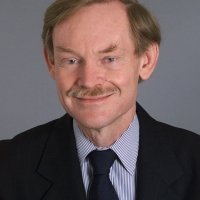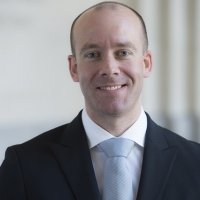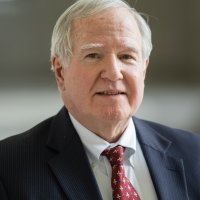The Trans-Pacific Partnership: New Rules for a New Era
On Wednesday, June 19th 2013, participants gathered for the Trans-Pacific Partnership: New Rules for a New Era. The event received more RSVPs than any other event held in the meeting rooms of the Wilson Center to date and also involved the largest number of Wilson Center programs working together. The event was organized by the Program on America and the Global Economy (PAGE), with the active assistance of the Asia Program, the European Studies Program, the Canada Institute, the Kissinger Institute, the Latin America Program (LAP), the Mexico Institute and with the added support of Wilson Center Senior Scholar William Krist. The discussion on the Trans-Pacific Partnership featured the Honorable Robert Zoellick, former president of the World Bank, former United States Deputy Secretary of State, and former U.S. Trade Representative. The expert panels following the keynote discussed the ways in which the TPP fits into other regional trade agreements and what it will take for a successful negotiation. Kent Hughes, director of the Program on America and the Global Economy at the Wilson Center, was the overall moderator of the event.
The Honorable Jane Harman spoke briefly on the importance of the Trans-Pacific Partnership and introduced the keynote speaker, Robert Zoellick. Harman explained the extensive potential benefits of a TPP agreement. She noted that TPP negotiations could also be used as a template for other agreements with “commercially important” countries, such as China and Russia. Future multinational negotiations could also use TPP negotiations as a model. Harman addressed the concern that the TPP is designed to contain China’s economic expansion. According to Harman, the TPP participants would actually “welcome China,” and other countries that were prepared to meet the high bar set by the current TPP members. In conclusion, Harman stressed the wide-reaching importance of trade agreements. She emphasized that a robust economy is an essential part of national security, and a robust economy depends on robust trade agreements.
The Honorable Robert Zoellick provided a perspective encompassing both the strategic and operational challenges the Trans-Pacific Partnership agreement will face in the process of its negotiations. He divided his speech into five points:
1. The same strategic impetus prompting the United States to press for the Asia-Pacific Economic Cooperation (APEC) trade ties led to the development of the Trans-Pacific Partnership as a natural evolution. Zoellick stressed the importance of trade agreements with Asia Pacific countries and believes that “America’s security alliances across the Pacific need an economic underpinning.” He asserted that even as the United States “pursues regional economic initiatives,” such as TPP, it is essential that the U.S. integrate these negotiations with steps to benefit the global economy.
2. The TPP has the potential to deepen the United States’ ties with other countries, both politically and economically. According to Zoellick, geopolitically, “TPP and TTIP could be America’s economic bridges to eastern and western boarders of Eurasia.” Therefore, “the need to strengthen trans-Pacific ties is pretty apparent.” Zoellick indicated that the 12 countries negotiating TPP represent about 40% of global GDP. He also insisted negotiators must “explain their logic for this agreement,” as FTAs already exist between the US and 6 of the countries involved in TPP negotiations. Zoellick argued that as the nature of global trade continues to change, trade regulations must also adapt accordingly. By adapting to global trends, the TPP will be able to “boost global and U.S. competitiveness.”
3. Japan’s involvement in the TPP reshapes the nature of the trade negotiations. He expressed the view that Prime Minister Abe now realizes that Japan must make certain microeconomic reforms to boost its long-term economic growth. Due to the immensity of the Japanese market, the U.S. and other TPP countries would benefit from open trade with Japan.
4. Zoellick posed the question, “Where does China fit?” Contrary to many, Zoellick does not see the TPP’s aim as an attempt to reduce China’s trade involvement. China is too integrated in the global market and its growth is integral to that of the TPP partners. According to Zoellick, the “TPP could be used as a “competitive liberalization strategy” that would create incentives for China to join the TPP negotiations. He felt that it was also necessary that the United States independently pursue “complementary efforts” with China. It is essential that the United States clarify that its economic strategy in regards to China is “not one of containment.”
5. Finally, Zoellick stated that he was “more concerned with the operational capability than the strategy.” The TPP’s success depends on whether President Obama is politically willing to “establish trade as a priority, make decisions, and close the deal.” Furthermore, “other TPP partners are waiting for the United States to show its hand.” To finalize TPP negotiations, principal negotiators must engage in creative problem solving to generate solutions that “open markets while coping with political sensitivities.”
Questions arose concerning sourcing and origin of the TPP, China’s need to open up its service sector, and the overall lack of transparency of TPP negotiations and its proposed regulations. Zoellick cited the “nature of change in the global economy” as reasoning for implementing the TPP in the first place. He emphasized the importance of the United States’ economic structural relationship with China and the potential of China’s service sector to grow as it increases its overall productivity and job opportunities. Zoellick also explicitly expressed his support for increased transparency in TPP negotiations.
Following the keynote, the first panel addressed how the TPP fits into other regional trade agreements. Members of this panel included: Ari Van Assche, associate professor of International Business at Hautes Études Commerciales (HEC) Montreal. Michael Geary, fellow at the Woodrow Wilson Center and assistant professor at Maastricht University in the Netherlands; and Roberto Herrera-Lim, director of the Eurasia Group with William Krist, Senior Policy Scholar at the Woodrow Wilson Center, as moderator.
Ari Van Assche emphasized the differences between the current trade reality and that of two decades ago. Throughout his discussion, Assche emphasized the importance of global value chains. According to Assche, in the new trade reality, value chains are global, not local. Assche noted the rising demand for tariff reductions, foreign direct investment liberalization, and beyond-the-border trade facilitation and regulatory harmonization. He also mentioned potential “stumbling blocks” as TPP negotiations continue. He argued that second-generation trade agreements, such as the TPP, could lead to problems related to jurisdictional conflicts and fragmentation of traditional interests.
Michael Geary focused his presentation on the Trans-Atlantic Trade and Investment Partnership (TTIP), and how it fits into the TPP and wider global trade issues. Geary stated that the TTIP would be the “biggest and most complex” trade deal in history, extending “from Alaska to Athens,” and amounting to half of the world’s economic output (GDP). According to Geary, the TTIP’s goal is to “create a single set of standards for the marketplace covering half of the world’s GDP.” Geary noted that TTIP would create about 1 million U.S. jobs and would reduce non-tariff trade barriers as it attempts to generate “deeper trade liberalization” between the European Union and United States. He stated that the issues surrounding the lack of transparency with the TPP negotiations serve a warning to TTIP that the negotiations need to be much more open.
Roberto Herrera-Lim communicated the Association of Southeast Asian Nations’ perspective on the TPP. Herrera-Lim emphasized that the structure of ASEAN makes the association incapable of solving trade problems between its member countries because of the varying political and economic perspectives. Herrera-Lim asserted that the politics of trade agreements have become increasingly complex in the past twenty years. Leaders of Southeast Asian countries must now deal with crucial political realities; constituents’ opinions can no longer be ignored. However, Herrera-Lim stated that he is optimistic about the future of trade possibilities in Southeast Asia. As production chains in Southeast Asia continue to change and as costs rise, trade relations among countries must be made more “seamless.” He concluded that regardless of the eventual agreement, Southeast Asian economies will continue their strategic move towards increased trade, whether it is accomplished through the TPP or some other trade agreement.
Questions arose concerning harmonizing the TTIP with Mexico and Canada’s agreements with the EU, labor standards and a potential for a race to the bottom, the relationship between the Regional Comprehensive Economic Partnership (RCP) and the TPP, and how the TTIP could address inequalities in competiveness between the EU core and periphery nations. Overall, Geary believes that the nuanced details of the TPP have yet to be negotiated. Assche affirmed that it is essential to take living and social issues into account when dealing with TPP negotiations, especially in terms of labor. In response to the question about the RCP, Herrera-Lim insisted that it is too early to determine the full impact of the RCP. However, he contended that negotiations for the TPP and RCP can proceed simultaneously. Geary explained the inevitability of competition between EU countries. Furthermore, according to Geary, all EU countries have the potential to gain through TTIP negotiations.
The second panel focused on the countries currently involved with the TPP and the elements needed for a successful negotiation. This panel featured: Joshua Meltzer, fellow in global economy and development at the Brookings Institution; Nguyen Vu Tung, Deputy Chief of Mission at the Embassy of Vietnam; and Marcos Robledo, professor of international relations and foreign policy at the Universidad Diego Portales with Kent Hughes, director of the Program on America and the Global Economy, as moderator.
Joshua Meltzer provided an Australian perspective to the TPP agreement, emphasizing Australia’s economic ties to China. Meltzer stated that services have become increasingly important to Australia’s exports and that Australia’s top trading partners are China, Japan, and the United States. He explained that free trade agreements already exist between Australia and five of the ten additional TPP countries. Therefore, the “real advantages” of the TPP for Australia will stem from trade opportunities with Japan, Canada, and Mexico, in contrast to the ways in which the United States could gain from the TPP. It is evident that there is a divergence in the ways in which the United States and Australia approach the TPP. According to Meltzer, much of this difference is due to the fact that China’s growth has affected the United States differently than Australia. He asserted that because of its strong economic ties to China, Australia would be interested in bringing China into the TPP in the future.
Marcos Robledo discussed Chile and the TPP. Robledo explained that Chile has a “complicated” economic and political relationship with the TPP. He stated that Chile, as an open democracy, strongly supports international cooperation and free trade. Furthermore, Chile is a proponent of free trade in the Asia-Pacific region as a whole. Nevertheless, Robledo demonstrated that Chile has low economic incentives to join the TPP, as free trade agreements already exist between each member state of the TPP and Chile. Robledo stated that it would be “difficult for Chile to gain something new in the negotiation.” He also pointed to high political costs to Chile in the TPP. According to Robledo, the TPP could have low economic gains but high economic costs for Chile.
Nguyen Vu Tung discussed the TPP and its potential political and economic ramifications for Vietnam. He stated that the “determination for Vietnam is there” to join the TPP. According to Tung, joining the TPP would be a strategic move for Vietnam in a variety of dimensions. Tung affirmed that Vietnam is confident that the TPP will “accelerate economic restructuring of its growth model.” He reiterated Vietnam’s seriousness about participating in TPP negotiations. Tung pointed out that of the 29 chapters of the TPP, Vietnam is currently amenable to 28. However, as the TPP negotiations continue, Tung believes that other negotiating partners must be more compromising. Tung concluded by reiterating Vietnam’s determination to participate in the TPP, but also emphasized the necessity for flexibility from other countries involved in the TPP. In terms of the United States position, Tung stressed the importance of market access for textile and shoes. According to Tung, much of the needed “flexibility and understanding can come in the form of capacity building and technical assistance.”
Questions for the panel included the impact of the current presidential campaign in Chile on TPP negotiations and labor standards in TPP countries. In response to the question about the campaign in Chile, Robledo stressed the importance of Chile’s growing civil society. Tung discussed the broad importance of labor standards as a growing political and social issue in trade negotiations. Meltzer pointed to labor issues as problems resulting from the unequal “distribution of gains from trade liberalization.”
By: Marjorie Baker, Program on America and the Global Economy
Kent Hughes, Director, Program on America and the Global Economy
Speakers

Former President of the World Bank Group; Former Deputy Secretary of State; Counselor to former US Secretary of State James A. Baker

Associate Professor, Modern Europe and the European Union, Faculty of Humanities, Norwegian University of Science and Technology, Trondheim, Norway

Former Director, Program on America and the Global Economy, Woodrow Wilson Center
Hosted By

Indo-Pacific Program
The Indo-Pacific Program promotes policy debate and intellectual discussions on US interests in the Asia-Pacific as well as political, economic, security, and social issues relating to the world’s most populous and economically dynamic region. Read more


Canada Institute
The mission of the Wilson Center's Canada Institute is to raise the level of knowledge of Canada in the United States, particularly within the Washington, DC policy community. Research projects, initiatives, podcasts, and publications cover contemporary Canada, US-Canadian relations, North American political economy, and Canada's global role as it intersects with US national interests. Read more


Kissinger Institute on China and the United States
The Kissinger Institute works to ensure that China policy serves American long-term interests and is founded in understanding of historical and cultural factors in bilateral relations and in accurate assessment of the aspirations of China’s government and people. Read more


Latin America Program
The Wilson Center’s prestigious Latin America Program provides non-partisan expertise to a broad community of decision makers in the United States and Latin America on critical policy issues facing the Hemisphere. The Program provides insightful and actionable research for policymakers, private sector leaders, journalists, and public intellectuals in the United States and Latin America. To bridge the gap between scholarship and policy action, it fosters new inquiry, sponsors high-level public and private meetings among multiple stakeholders, and explores policy options to improve outcomes for citizens throughout the Americas. Drawing on the Wilson Center’s strength as the nation’s key non-partisan policy forum, the Program serves as a trusted source of analysis and a vital point of contact between the worlds of scholarship and action. Read more


Mexico Institute
The Mexico Institute seeks to improve understanding, communication, and cooperation between Mexico and the United States by promoting original research, encouraging public discussion, and proposing policy options for enhancing the bilateral relationship. A binational Advisory Board, chaired by Luis Téllez and Earl Anthony Wayne, oversees the work of the Mexico Institute. Read more


Global Europe Program
The Global Europe Program is focused on Europe’s capabilities, and how it engages on critical global issues. We investigate European approaches to critical global issues. We examine Europe’s relations with Russia and Eurasia, China and the Indo-Pacific, the Middle East and Africa. Our initiatives include “Ukraine in Europe”—an examination of what it will take to make Ukraine’s European future a reality. But we also examine the role of NATO, the European Union and the OSCE, Europe’s energy security, transatlantic trade disputes, and challenges to democracy. The Global Europe Program’s staff, scholars-in-residence, and Global Fellows participate in seminars, policy study groups, and international conferences to provide analytical recommendations to policy makers and the media. Read more
